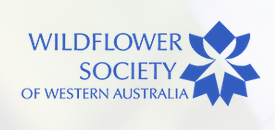
Thysanotus manglesianus. Photo taken by Tiffany Bennett
When we were out in the field the other day we found these wonderful little plants in flower so I decided to write about them.
The Fringe Lily belongs to the plant family Asparagaceae and to the genus Thysanotus. Species from the Thysanotus genus can be found right across Australia and are known to occur in all states and territories. In Western Australia, many of the species of Thysanotus are found here within the southwest region. These intricate little plants occupy a variety of habitats ranging from cool moist Karri Forests to dry, almost arid inland Mallee woodland.
Thysanotus are herbs that have grass-like, linear, basal leaves (sometimes leaves are absent). The inflorescence is terminal (which means they grow from or appear at the end of the stems), often branched with flowers that are stalked and either solitary or clusters. The flowers are usually purple but they can also be blue or white. Each flower has 3 sepals, usually purple, 3 petals, also usually purple, which have a broadly fringed margin, and 3 to 6 stamens.
Thysanotus manglesianus, commonly known as the Fringe Lily, are perennial herbs that have annual twinning or creeping stems that can grow to 1 m long. They infrequently produce leaves, the flowering stems are branched and flowers are terminal and solitary. Each flower has 3 purple sepals, 3 purple petals which have broadly fringed margins and 6 stamens, 3 long and 3 short.

Thysanotus manglesianus. Photo taken by Tiffany Bennett.
Fringe Lilies are found in woodlands on limestone, white and red sand, loam, clay, laterite and granite. They occur right across the southwest region and into the Eremaean Botanical Province (central part of Western Australia).
The fringed purple petals of these little plants make them easy to distinguish from other purple flowering plants. Thysanotus manglesianus flowers between August and November and can be seen flowering now.
Sources:
- Wheeler, J., Marchant, N. and Lewington, M. (2002). Flora of the South West of Western Australia, Volume 1. Australian Biological Resources Study and University of Western Australia Press. Perth, Western Australia.
- Florabase





